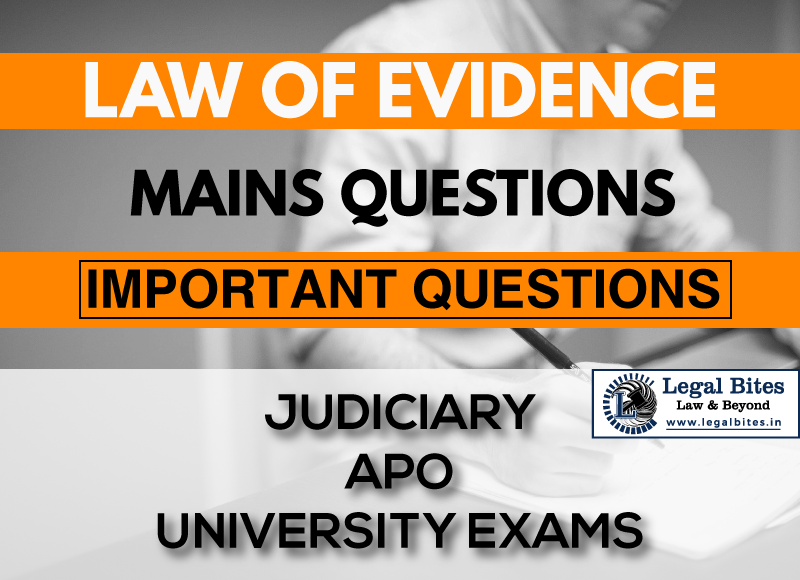State when facts bearing on the question of whether the act was accidental or intentional are relevant in evidence. Give examples to illustrate your answer.
Question: State when facts bearing on the question of whether the act was accidental or intentional are relevant in evidence. Give examples to illustrate your answer. Find the answer to the mains question only on Legal Bites. [State when facts bearing on the question of whether the act was accidental or intentional are relevant in evidence. Give examples… Read More »

Question: State when facts bearing on the question of whether the act was accidental or intentional are relevant in evidence. Give examples to illustrate your answer. Find the answer to the mains question only on Legal Bites. [State when facts bearing on the question of whether the act was accidental or intentional are relevant in evidence. Give examples to illustrate your answer.] Answer Section 15 of Indian Evidence Act says: “When there is a question whether an act was accidental...
Question: State when facts bearing on the question of whether the act was accidental or intentional are relevant in evidence. Give examples to illustrate your answer.
Find the answer to the mains question only on Legal Bites. [State when facts bearing on the question of whether the act was accidental or intentional are relevant in evidence. Give examples to illustrate your answer.]
Answer
Section 15 of Indian Evidence Act says: “When there is a question whether an act was accidental or intentional or done with particular knowledge or intention, the fact that such act formed part of a series of similar occurrences in each of which the person doing the act was 'concerned, is relevant”.
Illustration: (a) A is accused of burning down his house in order to obtain money for which it is insured. The facts that A lived in several houses successively, each of which he insured, in each of which a fire occurred, and after each of such fire, A received payment from a different insurance office, are relevant, as tending to show that the fires were not accidental.
So Section 15 lays down the Rule as to the admissibility of evidence in cases where the question is whether a particular act was accidental or was done with a particular intention. To prove so, Section 15 provides a method i.e. similar Act. For this purpose it is necessary that all the acts should form part of a series of similar occurrences, the reason is that one instance may be accidental but repetition of similar instances will be intentional and not accidental.
Through this section, the court establishes whether an act is incidental or accidental. This is done by checking whether such an event was a part of similar occurrences and in each, the person concerned was executing the act.
This was rightly explained in the case of R v. Smith (1915 11 Cr App 233): If you find an accident which benefits a person and you find that the person has been sufficiently fortunate to have the accident happened to him a number of times, benefitting him each time, you draw a very strong, frequently an irresistible inference, that the occurrence of so many accidents benefitting him is such a coincidence that it cannot have happened unless it was designed.
Important Mains Questions Series for Judiciary, APO & University Exams
- Law of Evidence Mains Questions Series Part-I
- Law of Evidence Mains Questions Series Part-II
- Law of Evidence Mains Questions Series Part-III
- Law of Evidence Mains Questions Series Part-IV
- Law of Evidence Mains Questions Series Part-V
- Law of Evidence Mains Questions Series Part-VI
- Law of Evidence Mains Questions Series Part-VII
- Law of Evidence Mains Questions Series Part-VIII
- Law of Evidence Mains Questions Series Part-IX
- Law of Evidence Mains Questions Series Part-X

Admin Legal Bites
Legal Bites Study Materials correspond to what is taught in law schools and what is tested in competitive exams. It pledges to offer a competitive advantage, prepare for tests, and save a lot of money.
